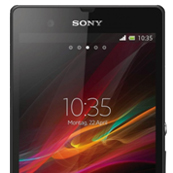Boasting a 5-inch Full HD 1080x1920px Capacitive touchscreen display with 16 million colors, 13.1-megapixel main camera with a 4128×3096 resolution, LED flash, autofocus, stabilization and a host of other camera features, the photographic possibilities of the new Sony look promising.
Achieving a DxOMark Mobile rating of 61, the Xperia Z ranks 9th overall for Mobiles on our database..
Looking specifically at the camera module, the Xperia again ranks 9th overall with a DxOMark Mobile Photo Score of 62. Its score is ahead of the older Galaxy S II & iPhone 4 handsets, but far from the 81 points achieved by the monster 41-megapixel Nokia 808.
Images are mostly well exposed with nice colors captured under all lighting conditions. Even in low-light, the noise levels are relatively low, and without any colored chroma noise visible. Interestingly, the chroma noise can appear in outdoor pictures, a phenomenon due to the fact that the noise treatment is not activated when there is an abundant amount of light in the scene.
As you’d expect under difficult lighting conditions, exposures are a bit erratic; in low-light, a long exposure time of 1/8 sec without the Stabilizer kicking in means shots will inevitably suffer camera shake. Despite the good colors, White Balance temperature is also an issue, with some color casts noticeable in both indoor and outdoor shots; these same shots also suffer from poor contrast in the shadows, although only minimal color shading is visible.
Despite being one of the highest resolution Smartphones available, fine image details are lost when viewed at what would be equivalent to a 100% scale for 8 M pixels cameras. The Sony Xperia Z also struggles in low-light, with many of the pictures being out of focus – this, despite multiple autofocus modes and good AF controls in “Gold Mode”. Similar problems occur with video autofocus as well, which is not very responsive to changing scenes; on the plus side, video on the Sony Xperia Z boasts both good noise reduction and the best video contrasts management we’ve seen on a Smartphone to date.
Photo Pros
- Good overall exposure
- Nice colors
- Low noise in low light situations without chromatic component
Video Pros
- Excellent contrast and dynamic: best device tested to date.
- Good noise reduction.
Photo Cons
- Very strong low frequency chromatic noise in the shade, when in bright light conditions.
- Poor texture preservation in every lighting condition. Strong loss of texture in low light conditions.
- Poor auto-focus repeatability in low light conditions. Many pictures are out of focus as a result.
- Some white balance errors outdoors.
- Color shading with tungsten light (not noticeable with other source lights).
- Excessive exposure time in low light, even when the image stabilizer is not in use.
Video Cons
- Loss of texture, even in bright light.
- Artifacts, such as aliasing (staircase effect on straight lines) and flickering.
- Inefficient video stabilization.
- Autofocus not very reactive to scene change without phone motion.






DXOMARK encourages its readers to share comments on the articles. To read or post comments, Disqus cookies are required. Change your Cookies Preferences and read more about our Comment Policy.